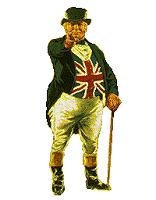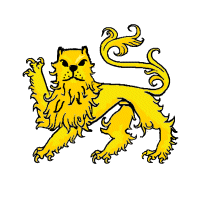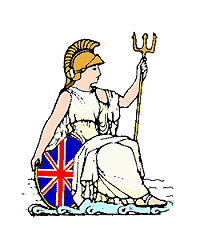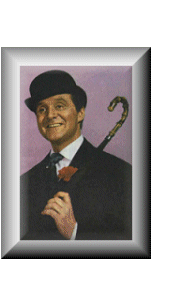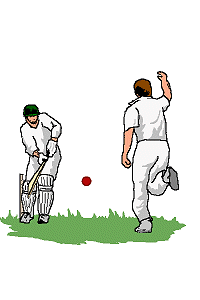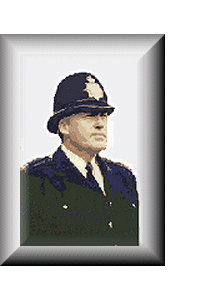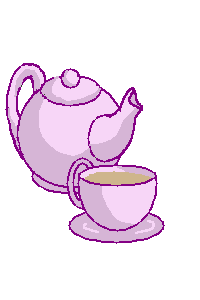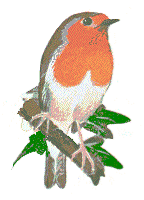Customs and Traditions of Great Britain
CUSTOMS AND TRADITIONS OF GREAT BRITAIN
T H E S E S
In Britain traditions play a more important part in the life of people than in other countries. Englishmen are proud of their traditions and carefully keep them up.
The English are reputed to be cold, reserved, rather haughty people. They are steady, easy-going and fond of sports. There are certain kinds of behavior, manners and customs which are peculiar to England. The English are naturally polite and are never tired of saying "Thank you" and "I am sorry". They are generally disciplined, you never hear loud talk in the street. They don't rush for seats in buses and trains, but they take their seats in queues at bus stops. English people do not shake hands when meeting one another, they do not show their emotions even in tragic situations. They seem to remain good-tempered and cheerful under difficulties. The English are a nation of stay-at-homes. There is no place like home. The Englishman says "My house is my castle" because he doesn't wish his doings to be overlooked by his neighbours. It is true that English people prefer small houses, built for one family. The fire is the focus of the English Home. Other nations go out to cafes or cocktail bars. The fireplace is the natural centre of interest in the room. They like to sit round the fire and watch the dancing flames, exchanging the day's experience. In many houses you will still see fireplaces, sometimes with columns on each side and a shelf above it on which there is often a clock or a mirror or photos. The love of gardens is deep-rooted in the British people. Most men's conversations are about gardens. It may be a discussion of the best methods of growing cucumbers, a talk about the plot which differs from all the others. The British like growing plants in a window-box outside the kitchen or in the garden near the house. They love flowers very much. Britain is a nation of animal lovers. They have about five million dogs, almost as many cats, 3 million parrots and other cage birds, aquarium fish and 1 million exotic pets such as reptiles. In Britain they have special dog shops selling food, clothes and other things for dogs. There are dog hair-dressing saloons and dog cemetries. In Britain pets can send Christmas cards to their friends, birthday cards. Owners can buy for their pets jewelled nylon collars, lambswool coat for a dog, lace-trimmed panties, nightgowns, pyjamas, and so on. There are special animal hotels at the airports. The English people believe that they are the only nation on the earth that is really kind to its animals. How do they spend their week-ends. Those who live in cities and towns like to go out of town. They may go to stay in the country. Every Englishman is fond of the countryside in a nice thatched cottage with roses round the porch and in the garden. We cannot really imagine Britain without all its traditions, this integral feature of social and private life of the people living on the British Isles that has always been an important part of their life and work. English traditions can classified into several groups: traditions concerning the Englishmen’s private life (child’s birth, wedding, marriage, wedding anniversary); which are connected with families incomes; state traditions; national holidays, religious holidays, public festival, traditional ceremonies. There are numerous royal traditions in Britain, some are ancient, others are modern. Working on this topic I have to conclusion that British people are very conservative. They are proud of their traditions and carefully keep them up. It was interesting to know that foreigners coming to England are stuck at once by quite a number of customs and peculiarities.
So I think of Britain as a place a lot of different types of people who observe their traditions.
CONTENTS
- Introduction 5
-
Traditional Ceremonies in London 7
- Changing the Guard
- Mounting the Guard
- The Ceremony of the Keys
- Trooping the Colour
- The Sovereign’s Entry into the City of London
- Swan – Upping
-
Engagements, Wedding, Births and Funerals 15
- Getting Engaged 15
- Weddings 16
- The Forms of Marriage
- Times of Wedding
- Marriage in Scotland
- The Preparation
- Division of Responsibilities
- The Ceremony
- The Reception
- Births and Christenings
-
Funerals
-
Leisure
- Gardening 26
- Keeping Pet Animals 27
- Conclusion 28
- List of Literature 29
- Appendices 30
-
Leisure
INTRODUCTION
Every nation and every country has its own traditions and customs. Traditions make a nation special. Some of them are old-fashioned and many people remember them, others are part of people’s life. Some British customs and traditions are known all over the world.
So many countries so many customs, an English proverb says. The combination of the words tradition and custom means a usual manner of doing smth, passed on from generation to generation. English traditions can be subdivided into the traditions dealing with private life of the English national and religious holidays, public celebrations, traditional ceremonies and traditional sporting events. A great number of customs and traditions date back to the early days of Great Britain and we can justly say that they are the reflection of the country’s history and the people’s psychology. To know the customs and traditions means to understand the people, their art and culture better. In the matter of holidays the British are less well off than other Europeans.
The British have many traditions, manners and customs of which they can be proud. England has preserved its old ceremonies and traditions to a greater extent than any other country in the world. Most of these traditions have been kept up without interruption since the thirteenth century. Foreigners coming to England are impressed by a great number of ceremonies which seem to be incompatible with the modern traffic and technical conditions of a highly developed country. Some British customs and traditions are famous all over the world. Bowler hats, tea and talking about the weather, for example.
From Scotland to Cornwall, Britain is full of customs and traditions. A lot of them have very long histories. Some are funny and some are strange. But they're all interesting. There are all the traditions of British sport and music. There's the long menu of traditional British food. There are many royal occasions. There are songs, sayings and superstitions. They are all part of the British way of life.
If you arrive in Great Britain you'll hear the word “tradition” everywhere. Englishmen have sentimental love for things and traditions. They never throw away old things. In many houses in Great Britain they have fire-places and though their bedrooms are awfully cold, the English people do not want to have central heating because they do not want to have changes. Therefore the Yeomen-Warders are dressed in traditional medieval clothes and the traditional dress of the Horse Guards regiment has existed since the twelfth century. In the House of Lords of the British Parliament there are two rows of benches for lords and a sack of wool for the Lord Chancellor to sit on it. This is so because in the old times wool made England rich and powerful. In the House of Commons you will see two rows of benches for the two parties: the government on one side and the opposition — on the other. In front of the benches there is the strip on a carpet and when a member speaking in the House puts his foot beyond that strip, there is a shout “Order!”. This dates from the time when the members had swords on them and during the discussion might want to start fighting. The word “order” reminded them that no fighting was allowed in the House. Another old custom remains from the time when there was a lot of robbers in London. In those days the shouting “Who goes home?” was often heard in the Houses of Parliament and the members went in groups along the dark narrow streets of the old city. In modem London with its well-lit streets the shouting “Who goes home?” is still heard.
We decided to study some stereotyped images of the United Kingdom and try to understand whether they are true to life or have completely or partially changed. Since it is impossible to examine all aspects of public life in the country all cultural and socio cultural peculiarities, we have chosen such areas: as the traditions concerning the Englishmen’s private life; which are connected with families incomes; state traditions and traditional ceremonies.
TRADITIONAL CEREMONIES IN LONDON
London has still preserved its old ceremonies and traditions to a greater extent than any other city in England. However, it is beyond the scope of this book to deal with all the ritual surrounding the British capital. We have, therefore, limited ourselves to the description of those traditional ceremonies which are widely known both in Great Britain and abroad.
CHANGING THE GUARD
One of the most impressive and popular displays of royal pageantry is Changing the Guard, which takes place at Buckingham Palace every day, including Sunday, at 11. 30.
The troops who take part are selected from the five regiments of Foot Guards. Their numbers are dependent on whether the Queen is in residence or not. These form the famous Brigade of Guards, and they consist of the Grenadiers, the Coldstream Guards, and the Welsh, Irish and Scots Guards.
The men of the duty guard march from either Wellington or Chelsea Barracks to Buckingham Palace with a band, which during the actual ceremony plays in the forecourt of the Palace.
The guard to be relieved forms at the southern end of the forecourt under the command of the Captain of the Queen's Guard. They are drawn up into two ranks. Before they are stood at ease, the colour is paraded by the ensign on duty. Each regiment has two colours — a royal one and a regimental one. The royal colour can be seen only when the Queen is at home. Sometimes the colour is decorated with a laurel wreath, signifying the anniversary of a battle in which the regiment was engaged.
The new guard enters the forecourt by the north gate. As it approaches, the old guard is called to attention. The new guard is then halted to be formed into files before it advances to position at a slow march. While this is taking place, the band plays. Later the band leads the old guard back to their barracks.
Now a word about the colourful uniforms of the Foot Guards. On ceremonial duty these are scarlet tunics, blue trousers and bearskin caps. Apart from the Scots Guards, the regiments have distinctive plumes. It is easy to identify the different regiments by looking closely at the spacing of their tunic buttons. The oldest regiment, the Grenadier Guards, have singly-spaced buttons; the Coldstream Guards are in groups of two; the Scots, Irish and Welsh Guards in groups of three, four and five respectively.
The history of the Foot Guards goes back to 1656, when Charles II of England, during his exile in Holland, recruited a small body-guard, which was merged in the regiment of guards enrolled at the Restoration in 1660. On St. Valentine's Day, 1661, on Tower Hill, what had been the Lord General's Regiment of Foot Guards, formed by Oliver Cromwell in 1650, took up its arms as an “extraordinary guard” for the Sovereign. Having marched from Coldstream, near Berwick-upon-Tweed, it acquired the title of the Coldstream Guards. Its motto of nulli secundus sufficiently denotes its denial of precedence to the first Guards. The latter acquired their title of Grenadier Guards and their bearskin headdress — later adopted by the rest of the Guards brigade — by virtue of their defeat of Napoleon's grenadier guards at Waterloo.
In 1661 the Scots Fusilier Guards became known for the first time as the Scots Guards. In 1707 they were put on the same footing as the other two Guards regiments.
In 1900 Queen Victoria, pleased with the fighting quality of the Irish regiments in the South African War, commanded the formation of the Irish Guards.
In 1915 the representational nature of the brigade was rounded off by the formation of the Welsh Guards.
The Brigade of Guards serves as a personal bodyguard to the Sovereign.
When the Queen is in residence at Buckingham Palace, there is a guard of four sentries. Only two are on duty when she is away from London.
When the Queen is in residence at Windsor Castle, another Changing the Guard ceremony takes place in the Quadrangle there at 10 a. m. daily.
MOUNTING THE GUARD
The colourful spectacle of Mounting the Guard, at the Horse Guards, in Whitehall, always attracts London sightseers.
It can be seen at ll a.m. every weekday and at 10 a.m, on Sundays.
The guard is provided by a detachment of the Household Cavalry and involves units of the Royal Horse Guards, known as the “Blues”, and the Life Guards, sometimes referred to as “The Tins”.
The Life Guards wear scarlet uniforms and white metal helmets with white horsehair plumes and have white sheepskin saddles. The Royal Horse Guards wear deep-blue tunics and white metal helmets with red horsehair plumes and have black sheepskin saddles.
Both wear steel cuirasses — body armour that reaches, down to the waist and consists of a breastplate and a back plate buckled or otherwise fastened together. It is said that many of these cuirasses retain the battle scars that were inflicted during the famous battle of Waterloo, which was in fact the last time they were worn in armed combat. The uniforms are completed with buckskin breeches, black jackboots and spurs.
The actual ceremony is dependent on whether or not the Queen is in residence in London. If she is, there is more to see. On these occasions the ceremony is performed by what has become known as the “long guard”. The guard is commanded by an officer in charge of sixteen troopers, a corporal of horse, a corporal major, and a trumpeter. The trumpeter rides a grey horse; the others ride black chargers. A standard is carried, except when the Queen is not in London, when, also, there is no officer in command.
First the old guard is dismissed. It is drawn up in the forecourt, which faces Whitehall. With the arrival of the new guard, the trumpeter sounds a call. The two officers salute and then stand their horses side by side while the guard is changed. The ceremony lasts for just over fifteen minutes, and ends with the old guard returning to its barracks.
THE CEREMONY OF THE KEYS
Every night at 9.53 p. m. the Chief Warder of the Yeomen Warders (Beefeaters) of the Tower of London lights a candle lantern and then makes his way towards the Bloody Tower. In the Archway his Escort await his arrival. The Chief Warder, carrying the keys, then moves off with his Escort to the West Gate, which he locks, while the Escort “present arms”. Then the Middle and Byward Towers are locked.
The party then return to the Bloody Tower Archway, and there they are halted by the challenge of the sentry. “Halt!” he commands. “Who goes there?” The Chief Warder answers, “The keys.” The sentry demands, “Whose keys?” “Queen Elizabeth's keys,” replies the Chief Warder. “Advance, Queen Elizabeth's keys; all's well,” commands the sentry.
Having received permission to proceed through the Archway, the party then form up facing the Main Guard of the Tower. The order is given by the officer-in-charge to “Present Arms”. The Chief Warder doffs his Tudor-style bonnet and cries, “God preserve Queen Elizabeth.” “Amen,” answer the Guard and Escort. The Chief Warder proceeds to the Queen's House, where the keys are given into the custody of the Resident Governor and Major.
The Ceremony of the Keys dates back 700 years and has taken place every night during that period, even during the blitz of London in the last war. On one particular night, April 16, 1941, bomb blast disrupted the ceremony, knocking out members of the Escort and Yeomen Warders. Despite this, the duty was completed.
Only a limited number of visitors are admitted to the ceremony each night. Application to see it must be made at least forty-eight hours in advance at the Constable's office in the Tower. Visitors with permission are admitted at 9.40 p. m. and leave at 10 p. m.
TROOPING THE COLOUR
During the month of June, a day is set aside as the Queen's official birthday. This is usually the second Saturday in June. On this day there takes place on “Horse Guards” Parade in Whitehall the magnificent spectacle of Trooping the Colour, which begins at about 11.15 a. m. (unless rain intervenes, when the ceremony is usually postponed until conditions are suitable).
This is pageantry of rare splendour, with the Queen riding side-saddle on a highly trained horse.
The colours of one of the five regiments of Foot Guards are trooped before the Sovereign. As she rides on to “Horse Guards” parade the massed array of the Brigade of Guards, dressed in ceremonial uniforms, await her inspection.
For twenty minutes the whole parade stands rigidly to attention while being inspected by the Queen. Then comes the Trooping ceremony itself, to be followed by the famous March Past of the Guards to the music of massed bands, at which the Queen takes the Salute. The precision drill of the regiments is notable.
The ceremony ends with the Queen returning to Buckingham Palace at the head of her Guards.
The Escort to the Colour, chosen normally in strict rotation, then mounts guard at the Palace.
THE SOVEREIGN'S ENTRY INTO THE CITY OF LONDON
Whenever the Sovereign wishes to enter the City of London on state occasions, he or she is met by the Lord Mayor at the site of Temple Bar, which marks the City boundary. First the Sword and Mace are reversed; then the Lord Mayor surrenders the City's Pearl Sword as a symbol of the Sovereign's over-riding authority.
The City Sword is held pointing downwards. The Sovereign then touches its hilt and returns it immediately. On receiving it back, the Lord Mayor bears it before the Sovereign, after which the royal party is allowed entry.
This custom dates back to 1588, on the occasion of Queen Elizabeth's drive to Old St. Paul's to give thanks for the defeat of the Spanish Armada.
SWAN-UPPING
When swans were first introduced into Britain (probably from Cyprus about the thirteenth century) they were very rare and were considered a great delicacy in the kitchens of the nobility. They were proclaimed royal birds, and the reigning, sovereign was, and still is, Seigneur of the Swans. Ownership of all the swans on the Thames is divided between the Queen and two of the oldest trade Companies in the City of London, the Dyers and the Vintners. These two Companies were granted the privilege in the reign of Elizabeth I. Once a year, usually in the second half of July, the ceremony of Swan-Upping and Marking is performed from gaily flagged skiffs by the Queen's Swanmaster and the Swanmasters of the Dyers and Vintners. The Swanmasters wear special gold-braided uniforms, and their assistants are dressed in striped jerseys. Their task is to mark cygnets on the Thames from London Bridge to Henley-on-Thames. Royal swans are not marked, but those of the Dyers' Company are recorded by one nick in the bill; those of the Vintners by two nicks. There are always several hundred birds to be marked, and the job takes a week or more to complete.
ELECTING LONDON'S LORD MAYOR
One of the most important functions of the City's eighty-four Livery Companies is the election of London's Lord Mayor at the Guildhall at 12 noon on Michaelmas Day (September 29th). The public are admitted to the ceremony. It provides one of the many impressive and colourful spectacles for which London is famed. The reigning Lord Mayor and Sheriffs, carrying posies, walk in procession to the Guildhall and take their places on the dais, which is strewn with sweet-smelling herbs. The Recorder announces that the representatives of the Livery Companies have been called together to select two Aldermen for the office of Lord Mayor of London. From the selected two, the Court of Aldermen will choose one. The Mayor, Aldermen and other senior officials then withdraw, and the Livery select their two nominations. Usually the choice is unanimous, and the Liverymen all hold up their hands and shout “All!”. The Sergeant-at-Arms takes the mace from the table and, accompanied by the Sheriffs, takes the two names to the Court of Aldermen, who then proceed to select the Mayor Elect. The bells of the City ring out as the Mayor and the Mayor Elect leave the Guildhall in the state coach for the Mansion House.
THE LORD MAYOR'S SHOW
The splendid civic event known as the Lord Mayor's Show is watched by many thousands of people, who throng the streets of the City of London on the second Saturday of November to see its interesting procession and admire its glittering pageantry.
Its origin dates back more than six hundred years.
The Lord Mayor Elect, having previously made his declaration of office (in the Guildhall the day before), is driven in state to the Royal Courts of Justice, where he takes the oath before the Lord Chief Justice and Judges of the Queen's Bench to perform his duties faithfully.
This final declaration was formerly made before the Barons of the Exchequer and originated in 1230 during the reign of Henry III.
Setting out from the Guildhall at about 11.30 a.m., the newly-elected Lord Mayor travels in a gilded coach which dates from the mid-eighteenth century.
Forming his bodyguard is the company of Pikemen and Musketeers. The long, colourful procession, made up of liveried footmen and coachmen and decorated floats presenting tableaux linked with the theme chosen for the Show, winds its way by a devious route to the Law Courts, arriving there about noon.
After the oath has been taken, the entire procession returns by way of the Embankment to the original point of departure.
During the evening there takes place at Guildhall the traditional Banquet, according to a custom going back two hundred and fifty years. This is a glittering occasion. The Banquet is attended by many of the most prominent people in the country, and is usually televised — at least in part. The Prime Minister delivers a major political speech, and the toast of the hosts on behalf of the guests is proposed by the Archbishop of Canterbury.
The cost of the Show and Banquet is met by the Lord Mayor and the Sheriffs, and one can imagine how high it is. In the late 1600's the cost of the Banquet is reputed to have amounted to nearly £700. It is interesting to note that the Lord Mayor today receives £15,000 from the City's cash for his term in office. From this amount all his expenses must be met.
ENGAGEMENTS, WEDDINGS, BIRTHS AND FUNERALS
GETTING ENGAGED
In Britain the custom of becoming engaged is still generally retained, though many young people dispense with it, and the number of such couples is increasing. As a rule, an engagement is announced as soon as a girl has accepted a proposal of marriage, but in some cases it is done a good time afterwards. Rules of etiquette dictate that the girl's parents should be the first to hear the news; in practice, however, it is often the couple's friends who are taken into confidence before either of the parents. If a man has not yet met his future in-laws he does so at the first opportunity, whereas his parents usually write them a friendly letter. It is then up to the girl's mother to invite her daughter's future in-laws to a meal or drinks. Quite often, of course, the man has been a frequent visitor at the girl's house long before the engagement, and their families are already well acquainted.
When a girl accepts a proposal, the man generally gives her a ring in token of the betrothal. It is worn on the third finger of the left hand before marriage and together with the wedding ring after it. Engagement rings range from expensive diamond rings to rings with Victorian semi-precious stones costing only a few pounds.
In most cases the engagement itself amounts only to announcements being
made to the parents on both sides and to friends and relations, but some
people arrange an engagement party, and among the better-off people it is
customary to put an announcement in the newspaper.
In the book Etiquette the author writes that “as soon as congratulations and the first gaieties of announcement are over, a man should have a talk with the girl's father about the date of their wedding, where they will live, how well off he is and his future plans and prospects.” Nowadays this is often not done, one of the reasons being that today the young people enjoy a greater degree of financial independence that they used to, to be able to decide these matters for themselves. However, in working class families, where the family ties are still strong and each member of the family is more economically dependent upon the rest, things are rather different. Quite often, particularly in the larger towns, the couple will have no option but to live after marriage with either the girl's or the man's people. Housing shortage in Britain is still acute, and the rents are very high. It is extremely difficult to get unfurnished accommodation, whereas a furnished room, which is easier to get, costs a great deal for rent. In any case, the young couple may prefer to live with the parents in order to have a chance to save up for things for their future home.
But if the young people, particularly those of the higher-paid section of the population, often make their own decisions concerning the wedding and their future, the parents, particularly the girl's, still play an important part in the ensuing activities, as we shall see later.
The period of engagement is usually short, three or four months, but this is entirely a matter of choice and circumstances.
WEDDINGS
The Forms of Marriage
In England and Wales there are four forms of marriage: by banns, by ordinary licence, by special licence and by a registrar.
Marriage by Banns is the form most usually adopted. Banns must be called for three consecutive Sundays in the parish churches of both the future bride and the groom unless they both live in the same parish. They must- have been resident for at least fifteen days previous to the first
publication of the banns. There is a small fee for the certificate of banns.
The clergyman at the church where the marriage is to take place must be notified by letter of the couple's intention to marry, of their names and addresses and how long they have resided in their parishes.
If one of the parties is a minor, a letter of consent must be obtained from both parents, and attached. (The form can be obtained from the Superintendent Registrar of the district.) If the marriage is to take place in the bride's church, a certificate of calling of the banns must be obtained from the bridegroom's parish clergyman. The marriage must then take place within three months of the banns being published.
Marriage by Ordinary Licence is a convenient alternative to the publications of banns. In London, application must be made by one party to the Faculty Office, where he will swear that he does not know of any impediment to the marriage such as being legally married to another or consanguineous relationship, and that one of the parties has lived for at least fifteen days in the parish of the church where the marriage is to take place.
A licence is valid in England and Wales for three months after the date of issue. Outside London, it can be obtained from any Bishop's Registry Office in a cathedral town or from a Superintendent Registrar in the district of residence. The licence4s granted without previous notice and is available as soon as it is issued', but the marriage must take place in a church named on the licence.
Marriage by Special Licence costs £25 and can be obtained only for special reasons such as suddenly being sent abroad. It is never granted lightly. Application must be made in person by one of the parties at the Faculty Office. The marriage can then take place at any time and in any place, celebrated by the rites of the church, and residence qualifications are unnecessary.
Marriage by a Registrar can be celebrated, without any religious ceremony, at a registry office. Notice must be given by one of the parties of the intended marriage, if both have resided in the district for seven days immediately preceding the notice. If one has lived in another district, notice must be given to his or her local registrar. The certificate is issued twenty-one days after the notice has been given.
Times of Weddings
Marriages can take place in a registered building in the presence of an authorized person between 8 a. m. and 6 p. m.
Marriage in Scotland
In Scotland, people over the age of sixteen do not require their parents' consent in order to marry. Marriage is performed by a minister of any religion after the banns have been called on two Sundays in the districts where the couple have lived for at least fifteen days previously. Weddings may take place in churches or private houses, and there is no forbidden time.
Alternatively, the couple may give notice to the registrar of the district in which they have both lived for fifteen days previously. The registrar will issue a Certificate of Publication which is displayed for seven days, and it will be valid for three months in any place in Scotland.
Marriage at a registry office in Scotland requires a publication of notice for seven days or a sheriff's licence, as publication of banns is not accepted. Such a licence is immediately valid but expires after ten days. One of the parties must have lived in Scotland for at least fifteen days before the application, which is often prepared by a solicitor.
The Preparation
As soon as the wedding date has been decided the couple will think about the kind of wedding they want. Though comparatively few young people nowadays regularly attend church, most girls still dream of a white wedding, with its solemn ceremony, bridesmaids and the rest. There is no equivalent in England of our Palaces of Weddings, and civic ceremonies in a registry office are very dull. But what with the church fees which are extremely high and other extra expenses, a white wedding costs a great deal of money, so a couple may decide against it on these grounds.
There are practically no special customs attached to weddings at a registry office. For this reason attention will be mainly given to church weddings, with their age-old ritual and customs. However, the reader should bear in mind that by no means all the customs concerning the preparations for a wedding or the wedding ceremony itself are necessarily maintained, quite often for reasons of economy.
Division of Responsibilities
The rules are not absolutely hard and fast, but generally they are as follows:
The Bride's Parents are responsible for the press announcements, the bride's dress and trousseau, flowers in the church, the reception, cars taking the bride and her father, mother and any other close members of her family to the church and photographers' fees.
The Bridegroom pays for the ring and the wedding licence, fees to the clergyman, the organist and choir, for the awning and anything else directly concerned with the service, although if there are to be orders of service, the bride's parents will have these printed at the same time as the invitations. He will pay for the bouquet for his bride and bouquets for the bridesmaids, buttonholes for his best man and ushers and any flowers worn by the bride's mother and his own mother, if they want to wear flowers - many women do not. He pays for the cars which take himself and the best man to the church and the car in which he and his bride will drive from the church to the reception. The cost of cars can, however, be divided between the parents of the bride and those of the groom, or the parents of the bride may wish to pay for it all. This is a matter for mutual arrangement.
The groom is expected to give a small present to each of the bridesmaids, and such a gift can range from a piece of jewellery to a beautifully bound book, a powder compact or any personal and pretty article.
Giving Away the Bride. The bride's father gives her away or, if he is dead or cannot be present at the ceremony, his place is taken by her brother or a close relative, or even a great family friend.
The Bridesmaids are usually the sisters, near relatives and close girl friends of the bride, and sisters of the groom. The number is purely a matter of choice but usually does not exceed six. There may be two small page-boys and four grown-up maids, or child attendants only. The bride chooses the kind of dresses her maids will wear and she may supply the material. The custom used to be for the bride's mother to pay for all the bridesmaids dresses, but today they usually pay for their own. A girl asked to be a bridesmaid can always refuse politely if she feels she cannot afford such a dress.
There is always a chief bridesmaid who will take the bride's bouquet during the ceremony and hand it back to her before she goes into the vestry to sign the register.
The Best Man is a brother, relative or close friend of the groom, and his main duty, apart from giving moral support before the wedding, is to see to the clergyman's fees, the tips to the vergers and to hand the wedding ring to the groom in the church. He is also responsible for seeing that the tridesmaids are looked after during the reception and he should reply to any toast to the bridesmaids.
The Ushers are male relatives and friends of both bride and groom. Their duties are to stand just inside the church and ask each guest "Bride or groom?" They will place friends of the bride on the left of the aisle and friends of the groom on the right. The ushers should be at the church at least three-quarters of an hour before the ceremony, and may hand out forms of service if these are not being placed before every pew.
The Bridegroom's Clothes. When the bride is in while, the bridegroom wears morning dress with a white carnation in his buttonhole (without fern or silver paper).
Widows or Divorcees, when re-marrying, do not wear white, but a short dress or a pretty suit or coat. They remove their first wedding rings and never wear them again. They do not have bridesmaids or pages.
The Ceremony
The parents and close relatives of the bride and groom arrive a few minutes before the bride. The bridegroom and his best man should be in their places at least ten minutes before the service starts. The bridesmaids and pages wait in the church porch with whoever is to arrange the bride's veil before she goes up the aisle.
The bride, by tradition, arrives a couple of minutes late but this should not be exaggerated. She arrives with whoever is giving her away. The verger signals to the organist to start playing, and the bride moves up the aisle with her veil over, her face (although many brides do not follow this custom). She goes in on her father's right arm, and the bridesmaids follow her according to the plan at the rehearsal the day before. The bridesmaids and ushers go to their places in the front pews during the ceremony, except for the chief bridesmaid who usually stands behind the bride and holds her bouquet.
After the ceremony the couple go into the vestry to sign the register with their parents, best man, bridesmaids and perhaps a close relation such as a grandmother. The bride throws back her veil or removes the front piece (if it is removable), the verger gives a signal to the organist and the bride and groom walk down the aisle followed by their parents and those who have signed the register. The bride's mother walks down the aisle on the left arm of the bridegroom's father and the bridegroom's mother walks down on the left arm of the bride's father (or whoever has given the bride away). Guests wait until the wedding procession has passed them before leaving to go on to the reception.
The Reception
The bride's parents stand first in the receiving line, followed by the groom's parents and the bride and groom. Guests line up outside the reception room and give their names to the major-domo who will announce them. They need only shake hands and say “How do you do?” to the parents, adding perhaps a word about how lovely the bride is or how well the ceremony went. The bride introduces to her husband any friends that he may not already know, and vice versa. The important parts of the reception are the cutting of the cake and the toast to the bride and groom. There should never be any long speeches. When all the guests have been received, the major-domo requests silence and the bride cuts the cake, with her husband's hand upon hers.
The toast to the bride and groom is usually proposed by a relative or friend of the bride. He may say, “My Lords (if any are present), ladies and gentlemen, I have pleasure in proposing the toast to the bride and bridegroom.” He should not make a speech full of jokes or silly references to marriage. It should be short and dignified. The bridegroom replies with a few words of thanks. He may or may not then propose the health of the bridesmaids. The best man replies with a few words of thanks. If a meal is provided, the toasts will come at the end of it.
After the toasts the bride and groom may move around the room talking to their friends until it is time for them to go and change. When they are ready to leave, guests gather to see them off.
Wedding Presents can be anything, according to your pocket and your friendship with the bride or groom. Such presents are usually fairly substantial compared with most other presents, and should preferably be things useful for a future home. Some brides have lists at a large store near their homes. It is always wise to ask if there is one, as this eliminates your sending something the couple may have already. The list should contain items of all prices and when one is bought it is crossed off. A wedding is one of the few occasions when money can be given, usually as a cheque. Presents are sent after the invitations have been received, usually to the bride's home. You address the card to both the bride and bridegroom.
BIRTHS AND CHRISTENINGS
When a child is born its parents may wish to announce the birth in a national or local newspaper. The announcement may read as follows:
Smith. On February 12th, 1963, at St. Mary's Hospital, Paddington, to Mary, wife of James Smith, 15 Blank Terrace, S. W. 3, a daughter. (The name can be added in brackets.)
The birth must be registered at the local registrar's office within six weeks in England and Wales and three weeks in Scotland. A child is usually christened in the first six months of its life.
At the christening there is one godmother and two godfathers for a boy and vice versa for a girl (but no godparents are necessary at a Church of Scotland christening). The god-mother always holds the baby during the ceremony and gives it to the clergyman just before he baptizes it. She makes the responses during the ceremony and tells the clergyman the names when asked. The true role of godparents is to watch over the spiritual welfare of their godchildren until confirmation, or at least to show interest in them throughout their childhood.
Usually, but by no means always, the friends and relatives give a christening present. Traditionally, the godparents give a silver cup, which is probably going to be far more useful if it is a beer mug! Other presents should preferably be something intended to last a lifetime, such as a leather-bound bible or poetry book, a silver spoon or a crystal and silver scent bottle.
FUNERALS
Nowadays undertakers organize things to such a degree that they really do undertake to cover every detail during this very painful and difficult period, from registering the death to printing the form of service for the funeral. An obituary notice is usually sent to a national or local newspaper and inserted in the “Deaths” column. It may read as follows:
Smith. On the 4th of January, 1964, at 15, Blank Road, Preston, Joan Mary Smith, beloved wife of John D. Smith and mother of Jane and Jeremy. Funeral private (or Funeral service at 11 a. m. on 7th January, at St. Mary's Church, Fells Road, Preston). “No flowers, by request” may be added if desired.
Those who send flowers do not carry them to the house in person, but place an order with a florist to have a wreath or bunch of flowers delivered on the morning of the funeral.
These should usually be sent to the church or to the undertaker, whose address can be given in the notice. A visiting card or plain card is attached, signed by the person or persons sending the flowers, together with some very simple message, “With deepest sympathy from ...” “With all our love from ...” or “With deepest affection from ...”
The wearing of mourning is a purely private affair today, but certainly everyone who attends a funeral should wear black or dark-grey and the men should wear black ties and hats.
It is not correct to send out printed cards to thank people for letters of condolence or flowers. These should all be acknowledged by letter, although if there are a great many a notice of thanks may be published in a newspaper.
LEISURE
GARDENING
Much leisure time is spent in individualistic pursuits, of which the most popular is gardening. Most English people love gardens, their own above all, and this is probably one reason why so many people prefer to live in houses rather than flats. Particularly in suburban areas it is possible to pass row after row of ordinary small houses, each one with its neatly-kept patch of grass surrounded by a great variety of flowers and shrubs. Many people who have no gardens of their own have patches of land or "allotments" in specially reserved areas — though a group of allotment gardens, with its mixed-up collection of sheds for keeping the tools and the dull arrangement of the rectangular sections of land, is usually not a thing of beauty. Although the task of keeping a garden is so essentially individial, for many people gardening is the foundation of social and competitive relationships. Flower-shows and vegetable-shows, with prizes for the best exhibits, are immensely popular, and to many gardeners the process of growing the plants seems more important than the merely aesthetic pleasure of looking at the flowers or the prospect of eating the vegetables. In many places a competitive gardener's ambition is to grow the biggest cabbages or leeks or carrots, and the plain fact that the merits of most vegetables on the table are in inverse ratio to their size seems often to be forgotten.
KEEPING PET ANIMALS
A tradition that is rooted not only in our own soil, but in the minds of the rest of the world is the devotion of the English to animals. Certainly, they will speak affectionately to and of their dogs and horses, which is more than they will do concerning their friends and family — but between the dogs and horses and the rest of the brute creation a sharp line has been drawn. The fox, the deer, the badger, the otter, the pheasant, and many others would have but little to say in praise of the animal-loving English, were they consulted. Even the domestic cat is, for the most part, only viewed as an inferior kind of dog, its sole virtue being that it will — like its owners — kill other, smaller animals.
But by dint of never thinking about it, the English firmly believe themselves to be the only nation on the earth that is really kind to its animals.
CONCLUSION
Every country and every nation has its own traditions and customs. It's very important to know traditions and customs of different people. They will help us to know more about the history and life of different nations and countries.
It has become a commonplace to say that studying a foreign language is impossible without studying a foreign culture. Although the points we have examined in our research may seem unimportant at first sight their significance can’t be underestimated. A lot of people still fail to understand that cultural differences arise out of the specific development of each country and tend to assume that the manners, customs and habits of their own country represent more or less absolute norms. When they hear, or discover for themselves, that people in other countries act and think differently, they assume that this is odd, unnatural or even abnormal. Then it’s only a small step to regarding their own nation superior to all others. When these people leave their home country for another one “culture shock” is the merest problem they are destined to face.
One cannot speak about England without speaking about its traditions and customs. They are very important in the life of English people. Englishmen are proud of their traditions and carefully keep them up.
You cannot really imagine Britain without all its traditions, this integral feature of social and private life of the people living on the British Isles that has always been an important part of their life and work.
I have chosen the topic British customs traditions because I enjoy learning the English language and wanted to know more about British ways of life and traditions. Working on this topic I have to conclusion that British people are very conservative. They are proud pf their traditions and carefully keep them up. It was interesting to know that foreigners coming to England are stuck at once by quite a number of customs and peculiarities.
So I think of Britain as a place a lot of different types of people who observe their traditions.
LIST OF LITERATURE
-
Власова Е.Л., Грин В.С. и др. A Glimpse of English Speaking Countries,
М.:Наука, 1969, 295 с. - Голицынский Ю. “Great Britain” изд. «Каро» г. С.-Петербург, 1999г.;
- Колуфман К.И. «Страницы Британской истории» изд. «Титул»
г. Обнинск, 1999г.;
-
Кертман Л.Е. География,история и культура Англии: Учебное пособие -
2 издание,переработанное - М.:Высшая школа ,1979,384 с.
5. Кощеева Н.Е. English Reader Part II. English National Traditions М. 1972.
6. Ощепкова В.В. “Britain in Brief” изд. «Лист» г. Москва 1999г.;
7. Пинягин Ю.Н. Великобритания: история, культура, образ жизни. – Пермь:
Изд-во Перм. Ун-та, 1996. – 296.
- Рис-Парнал Хиларн “Hello and goodbye”, журнал «Англия» №73
стр. 115- 117;
- Стивен Раблей “Customs and traditions in Britain” изд. “Longman Group”, ИК, 1996г.;
-
Тимошкина Н. и др. А свадьбы разные бывают. Семья, 1994, №41, с.17
11. Токарев С.А. Календарные обычаи и обряды в странах зарубежной
Европы. Исторические корни и развитие обычаев., Наука,
М..1983,218с.
12. Токарев С.А. Календарные обычаи и обряды в странах зарубежной
Европы.Летне-осенние праздники., Наука,М.,1978,292с.
13. Усова Г.С. “British history” изд. «Лань» г. С.-Петербург 1999г.;
- Химунина Т.Н. “Customs, traditions and holidays in Britain” изд. «Просвещение» г.С.-Петербург 1975г.;
-
Химунина Т.,Конон Н.,Вэлш Л.,Customs,Traditions and Festivals of Great
Britain,Просвещение,М.,1984,239с.
Appendices
Changing the Guard at Buckingham Palace

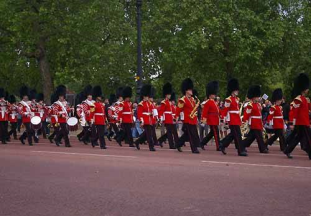
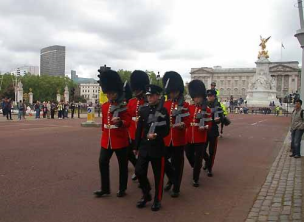
Changing of the Guard (Winter)
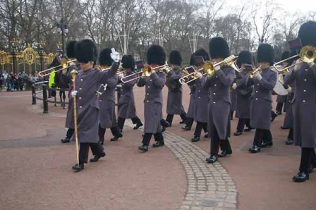

The Guards wear military coats on winter days so you might not see their bright red uniforms.
THE CEREMONY OF THE KEYS

The ancient custom of the Ceremony of The Keys, which involves the formal locking of the gates of the Tower of London, has been carried out continuously every night, without fail, for more than 600 years since 1340.
TROOPING THE COLOUR
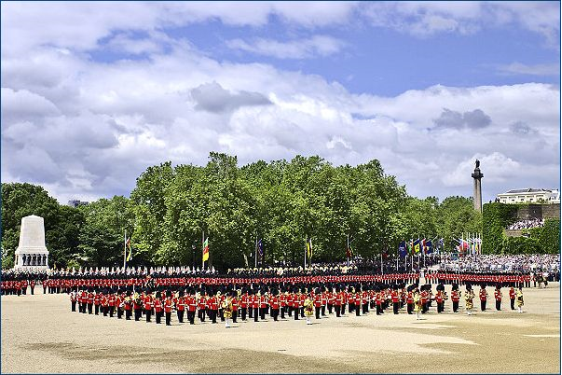
This military ceremony dates back to the early eighteenth century or earlier, when the colours (flags) of the battalion were carried (or 'trooped') down the ranks so that they could be seen and recognised by the soldiers.
Since 1748, this parade has also marked the Sovereign's official birthday.
SWAN-UPPING

Swan Upping is the annual census of the swan population on stretches of the Thames in the counties of Middlesex, Surrey, Buckinghamshire, Berkshire and Oxfordshire.
This historic ceremony dates from the twelfth century, when the Crown claimed ownership of all mute swans.
At that time swans were regarded as a delicious dish at banquets and feasts.

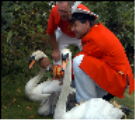


THE LORD MAYOR'S SHOW
The Lord Mayor's Show is one of the longest established and best known annual events in London which dates back to 1535.
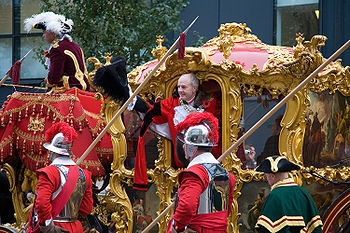

![]()
Icons, symbols and institutions
There are certain icons and institutions which even the British themselves consider as "British." This is just a selection of those things which spring to mind whenever one hears the word "British."
|
The BULLDOG symbolises the very essence of Britishness. He is solid, reliable, unshakeably loyal, very individual, VERY nice when you get to know him - and kind of cute in his own funny little way! He also bears a startling resemblance to Winston Churchill, Britain's great wartime leader whose memory is still held in great esteem by the majority of the British. |
|
|
|
The Americans have Uncle Sam, we have JOHN BULL. He is a fictional character, used to personify the British nation, and is always depicted as an elderly gentleman, rather portly in build, wearing full riding kit complete with breeches and boots, and a Union Jack waistcoat. He was created by John Arbuthnot (1667-1735) a Scottish author, scientist, and physician who wrote five satirical pamphlets in 1712 on the politics of the day, using John Bull as the typical Englishman. The character obviously struck a chord and he has persisted ever since : the picture on the left comes from a 1916 British Army recruiting poster. |
|
A BRITISH LION is really a member of a Rugby Football team (a very GOOD one, though) - the Lion is the emblem of England. It is actually a "lion passant gardant" - a walking lion, looking out at you full face, and was first used by Rollo, Duke of Normandy (father of William the Conqueror, who added the second lion.) The third was added by Henry II, and Henry VIII added a crown to the lion. In heraldry, the lion stands for "deathless courage" and the lion passant gardant for "resolution and prudence" The Scots also have a lion as their heraldic emblem: theirs is a red lion rampant (standing on its hind legs, looking straight forward.) |
|
|
|
|
|
The song "Rule Britannia" is still sung every year on the last night of the "Proms" - the Promenade Concerts held in the Royal Albert Hall in London - when the whole audience joins in a burst of nationalistic fervour and flag-waving, invariably drowning out the soloist who is supposed to be doing the singing! |
|
|
|
The BOWLER HAT conjures up an instant image of Britishness. Originally designed in 1850 by Lock's the hatters for William Coke II, later the Earl of Leicester, it was actually MADE by the hat maker William Bowler. It was first called the "Coke" but soon became known as a "Bowler," partly because of its maker but also because of its bowl-like shape. |
|
CRICKET - and I don't mean the commercialised, multicoloured specially-for-TV spectacle that masquerades under that name but the REAL game. There is no "British" national team, the team that competes with the other great cricketing nations of Australia, South Africa, Pakistan, India and the West Indies is England. At a more local level, cricket has county teams, works, club, village and even school teams, and families play their own versions of the game on playing fields and beaches every summer. Cricket is a leisurely game: Test matches (internationals) take up to five days, and three or two-day matches are usual at the higher levels of play. Even a village cricket match may take all day, and on a fine, sunny Sunday, village greens and cricket pitches around the country will see families picnicking on the grass around the boundary whilst watching the match in play. |
|
|
|
The British BOBBY is one of our most cherished icons, called after the founder of the modern police force, Sir Robert Peel. The local policemen may also be known as the "Plod" after the delightful policeman character Mr. Plod in Enid Blyton's "Noddy" stories, or as a "copper," from his habit of "copping" (seeing what they are up to and catching) wrongdoers. |
|
TEA is most definitely Britain's national drink, and it is difficult to get a decent cuppa anywhere else in the world! Tea drinking is not just a means of refreshment, it is also a social ritual and any hostess (or host) will put the kettle on immediately after greeting visitors. To make a proper cup of tea, you need a china or earthenware teapot; fill the kettle with freshly-drawn water and bring it to the boil. WARM THE POT by pouring in some of the boiling water, swishing it around then emptying it again. Purists will insist on loose tea but good quality teabags are acceptable - the traditional "one for each person and one for the pot" will produce rather a strong brew! I prefer mine a bit less violent - about 3 spoons (or bags) between four. Bring the water back to boil and pour it onto the tea immediately. Leave the tea to brew/mash/stand - it depends on where you live - for about five minutes. Gently give it a stir and leave for another minute for the tea leaves to settle again, then pour it out - but put the milk in the cup first! If you use loose tea, you might want to use a tea-strainer ( a sort of mini-sieve designed for just that purpose.) Add sugar to taste, and drink and enjoy! |
|
|
|
|
|
|
|
|
|
|
1


про публікацію авторської розробки
Додати розробку


